【Steel Industry】Goals Set for the Next Two Years: Average Annual Growth of 4% and ...

Graphite electrodes are the "lifeline" of EAF steelmaking! As the core material for arc conduction and heating, they feature high conductivity and heat resistance, directly affecting molten steel quality and output. Mastering graphite electrodes means mastering the initiative in EAF steelmaking!
【Steel Industry】Goals Set for the Next Two Years: Average Annual Growth of 4% and Strict Prohibition of New Capacity
The Ministry of Industry and Information Technology (MIIT) and other departments jointly issued the Work Plan for Steady Growth of the Steel Industry (2025–2026). The notice, issued by MIIT, the Ministry of Natural Resources, the Ministry of Ecology and Environment, the Ministry of Commerce, and the State Administration for Market Regulation, specifies that the annual average growth target for value added in the steel industry over the next two years is set at around 4%. The plan, centered on "stabilizing growth and preventing involution," provides an implementation path for the structural adjustment and high-quality development of China's steel industry.
It proposes precise regulation of capacity and production, advancing tiered and classified management of steel enterprises, strictly prohibiting the addition of new capacity, guiding the concentration of resources and elements toward leading enterprises, and promoting survival of the fittest through production regulation to achieve dynamic supply-demand balance.
It also highlights promoting the upgrading of bulk product quality. Focusing on the upgrading needs of major steel-using industries such as automobiles, machinery, shipbuilding, and home appliances, the plan calls for research to improve product and application standards, advancing application upgrades in coordination with downstream industries. It accelerates the improvement of green and low-carbon product standards, promotes certification of green and low-carbon steel products, and supports their application in key projects and major engineering in eligible regions. For steel products subject to production licenses, such as rebar, the plan will implement quality and safety traceability.
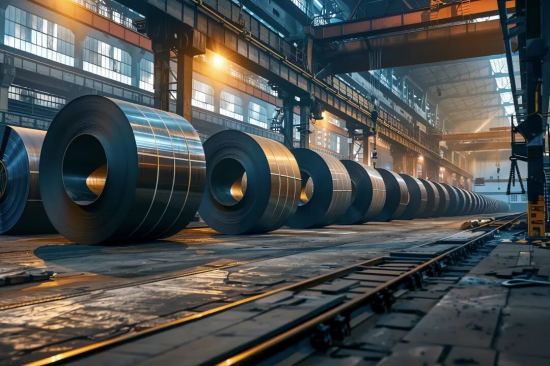
Steel Industry Steady Growth Work Plan (2025–2026)
The Ministry of Industry and Information Technology (MIIT), the Ministry of Natural Resources, the Ministry of Ecology and Environment, the Ministry of Commerce, and the State Administration for Market Regulation jointly issued the Steel Industry Steady Growth Work Plan (2025–2026).
The plan sets a target of approximately 4% average annual growth in added value for the steel industry over the next two years. With "stabilizing growth and preventing disorderly competition" as its core, the plan provides an implementation path for structural adjustment and high-quality development of China's steel industry.
The plan stipulates precise control of production capacity and output, advancing tiered management of steel enterprises, strictly prohibiting new capacity, and guiding resources toward leading enterprises. By controlling output, the plan aims to achieve market balance, eliminate backward capacity, and ensure supply-demand equilibrium.
It also emphasizes upgrading bulk product quality. Around the upgrading needs of key downstream industries such as automobiles, machinery, shipbuilding, and home appliances, the plan proposes raising product and application standards and advancing product application upgrades in coordination with downstream sectors. Green and low-carbon product standards will be improved, green steel certification expanded, and the use of green low-carbon steel promoted in major projects. Traceability systems for quality and safety will be implemented for steel products such as rebar.
Steel Industry Steady Growth Work Plan (2025–2026)
The steel industry is a vital foundation and pillar industry of the national economy, crucial for stabilizing industrial growth and ensuring economic stability. Currently, the industry faces excess supply, insufficient demand, and structural imbalances that affect quality and profitability. To implement the directives of the Central Economic Work Conference, stabilize operations, and optimize industrial structure, this work plan has been formulated.
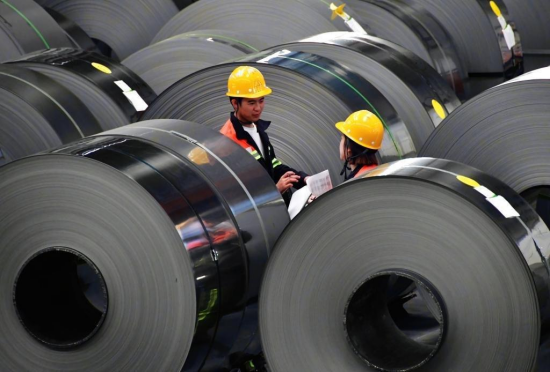
I. General Requirements
Guided by Xi Jinping Thought on Socialism with Chinese Characteristics for a New Era, and implementing the spirit of the 20th CPC National Congress and the 2nd and 3rd Plenary Sessions of the 20th Central Committee, the plan adheres to the principle of pursuing progress while ensuring stability.
It focuses on quality and efficiency, integrates technological and industrial innovation, and emphasizes coordination of supply and demand. It enforces strict prohibitions on new capacity and reductions in output, prioritizes high-end special steel R&D, upgrades the quality of bulk products, expands applications in construction and transportation, promotes digital and green transformation, accelerates the replacement of old growth drivers with new ones, cultivates new productive forces, and enhances the resilience and security of supply chains—ultimately ensuring effective qualitative improvements alongside reasonable quantitative growth.
II. Main Objectives
For 2025–2026, the steel industry's added value will grow by around 4% annually. Economic efficiency will stabilize, supply and demand will become more balanced, industrial structure will be further optimized, effective supply capacity enhanced, and green, low-carbon, and digital development significantly advanced.
III. Key Measures
(1) Strengthen industry management and promote market-based competition
Precisely regulate capacity and output. Revise and issue new implementation rules for capacity replacement, increase intensity of reduction-based replacement, and support projects aligned with industry development such as EAF steel, hydrogen metallurgy, mergers, and high-end special steels with differentiated replacement ratios. Advance capacity reduction and structural upgrading, coordinate capacity replacement with project approval, environmental assessment, pollutant discharge permits, and energy assessments. Continue implementing output reduction policies to force out backward capacity and ensure dynamic balance.
Advance tiered management of enterprises. Implement the Steel Industry Standard Conditions (2025 Edition), comprehensively classify enterprises, and manage them in three tiers: leading compliant, compliant, and non-compliant. Link classification with policies on production control, taxation, and finance to guide resources toward leading firms.
(2) Strengthen technological innovation and enhance effective supply
3. Enhance supply of high-end products. Focus on steel needed for high-performance bearings, gears, superalloys, and tool steels in advanced equipment and key components. Promote joint R&D across the industrial chain with enterprises, universities, and research institutes. Accelerate application verification and iteration through key platforms such as shipbuilding and ultra-supercritical materials. Build pilot platforms for advanced special steels and hydrogen metallurgy.
4. Upgrade bulk product quality. Raise standards for automobiles, machinery, shipbuilding, and home appliances, coordinate with downstream industries to push product upgrades, improve green standards, expand green steel certification, and apply green low-carbon steel in major projects. Implement traceability for rebar and other licensed products.
5. Secure raw material supply. Accelerate construction and expansion of key domestic iron ore projects. Support compliant mining operations while avoiding excessive shutdowns. Ensure stable supply of iron ore and coking coal, encourage long-term contracts, expand imports of high-quality coking coal and recycled steel, and build integrated scrap processing and smelting bases in key regions.
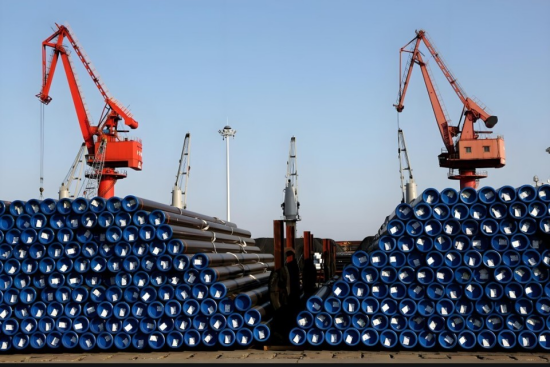
(3) Expand effective investment and accelerate transformation
6. Modernize equipment. Implement the Industrial Equipment Renewal and Technological Transformation Guidelines, accelerate upgrades of blast furnaces, converters, coke ovens, and sintering machines, and promote adoption of advanced EAF and special smelting equipment. Encourage regions to shift from blast furnace–converter routes to short-process EAFs.
7. Accelerate digital transformation. Implement the Steel Industry Digital Transformation Guidelines, develop evaluation standards, and build model factories. Promote "AI + steel industry," establish high-quality data sets, and advance both general and vertical AI models. Upgrade industrial operating systems.
8. Advance green and low-carbon transformation. Complete ultra-low emission retrofits by 2025, enhance energy efficiency, promote clean energy, and pursue hydrogen metallurgy R&D. Accelerate demonstration projects integrating green electricity, hydrogen, and metallurgy. Establish carbon footprint standards, strengthen carbon accounting, and prepare for inclusion in the national carbon trading market.
(4) Expand demand and stimulate consumption potential
9. Explore new applications. Deepen cooperation with shipbuilding and other key sectors through long-term agreements. Promote steel structures in housing, public buildings, and medium-span bridges. Support development of steel structure industrial parks and digital supply chain platforms.
(5) Deepen openness and enhance internationalization
10. Promote international development. Strengthen export management, optimize product structure, define high-tech steel products, and align carbon footprint standards internationally. Support enterprises in lawful global trade, integrate into supply chains, and improve competitiveness. Strengthen cooperation with Belt and Road countries and jointly expand global markets with products, technology, and services.
IV. Safeguard Measures
(1) Organizational support. Local governments must prioritize steady growth in steel, refine measures, and ensure implementation. Provinces with large steel industries should lead in transformation. Industry associations must curb disorderly competition, promote self-discipline, interpret policies, and provide feedback on issues.
(2) Policy support. Use tools such as innovation loans and special bonds to support low-carbon retrofits, digital upgrades, and resource utilization. Implement tax policies for scrap steel recycling and encourage financing services tailored to steel enterprises. Strengthen talent development for new materials, processes, and digital transformation.
(3) Monitoring and supervision. Conduct regular monitoring, organize operational analyses, identify risks early, improve capacity warning mechanisms, and issue alerts for overcapacity risks to guide market expectations.
MIIT Official Interpretation of the Steel Industry Steady Growth Work Plan (2025–2026)
1. What is the background of the plan?
The steel industry is a fundamental and pillar sector, vital for stabilizing industrial growth and the economy. In recent years, it has faced downward pressure:
Demand peak and decline. Real estate demand is weak, traditional construction demand is falling, and infrastructure has limited potential. Manufacturing (autos, shipbuilding) demand is growing but insufficient to offset declines. Trade frictions also increase uncertainty for exports.
Low profitability. In 2024, industry profits were RMB 66.29 billion, down 42.6% year-on-year, with widespread losses. From January–July 2025, profits reached RMB 83.03 billion, but growth remains fragile.
Tightening green and carbon targets. Over 80% of steel capacity must complete ultra-low emission retrofits by the end of 2025. The industry entered the national carbon trading market in 2025, requiring higher investment in green technologies.
2. What are the main goals?
The plan seeks both qualitative improvement and quantitative growth.
Quantitative: Achieve ~4% average annual growth in added value, stabilize industry profits, and avoid prolonged downturns.
Qualitative: Move away from extensive capacity expansion toward balance, structural optimization, and high-quality supply, cultivating new productive forces.
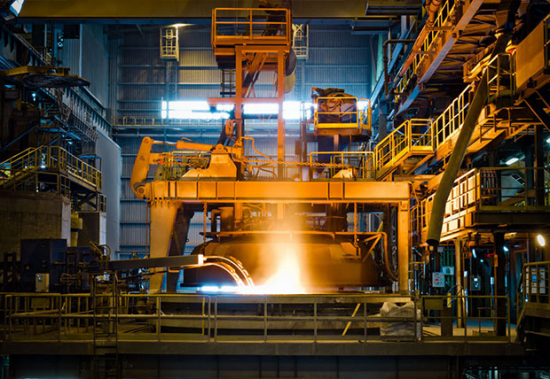
3. What are the key measures?
The plan outlines 5 areas with 10 measures:
Strengthen management, precisely regulate capacity, implement classification, and ensure dynamic balance.
Enhance supply quality through innovation, high-end product development, raw material stability, and product upgrades.
Expand investment, modernize equipment, accelerate digital and green transformation.
Stimulate demand by promoting steel applications in housing, infrastructure, and cooperation with shipbuilding.
Enhance openness, optimize exports, and strengthen global competitiveness.
4. How will implementation be ensured?
Three safeguard measures are proposed:
Organizational support – coordination among central/local governments, departments, and industry associations.
Policy support – financing, taxation, and talent development to back transformation.
Monitoring – regular supervision, early warnings, and risk guidance.
Feel free to contact us anytime for more information about the EAF Steel market. Our team is dedicated to providing you with in-depth insights and customized assistance based on your needs. Whether you have questions about product specifications, market trends, or pricing, we are here to help.
No related results found
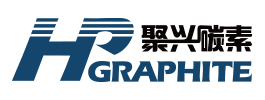







0 Replies